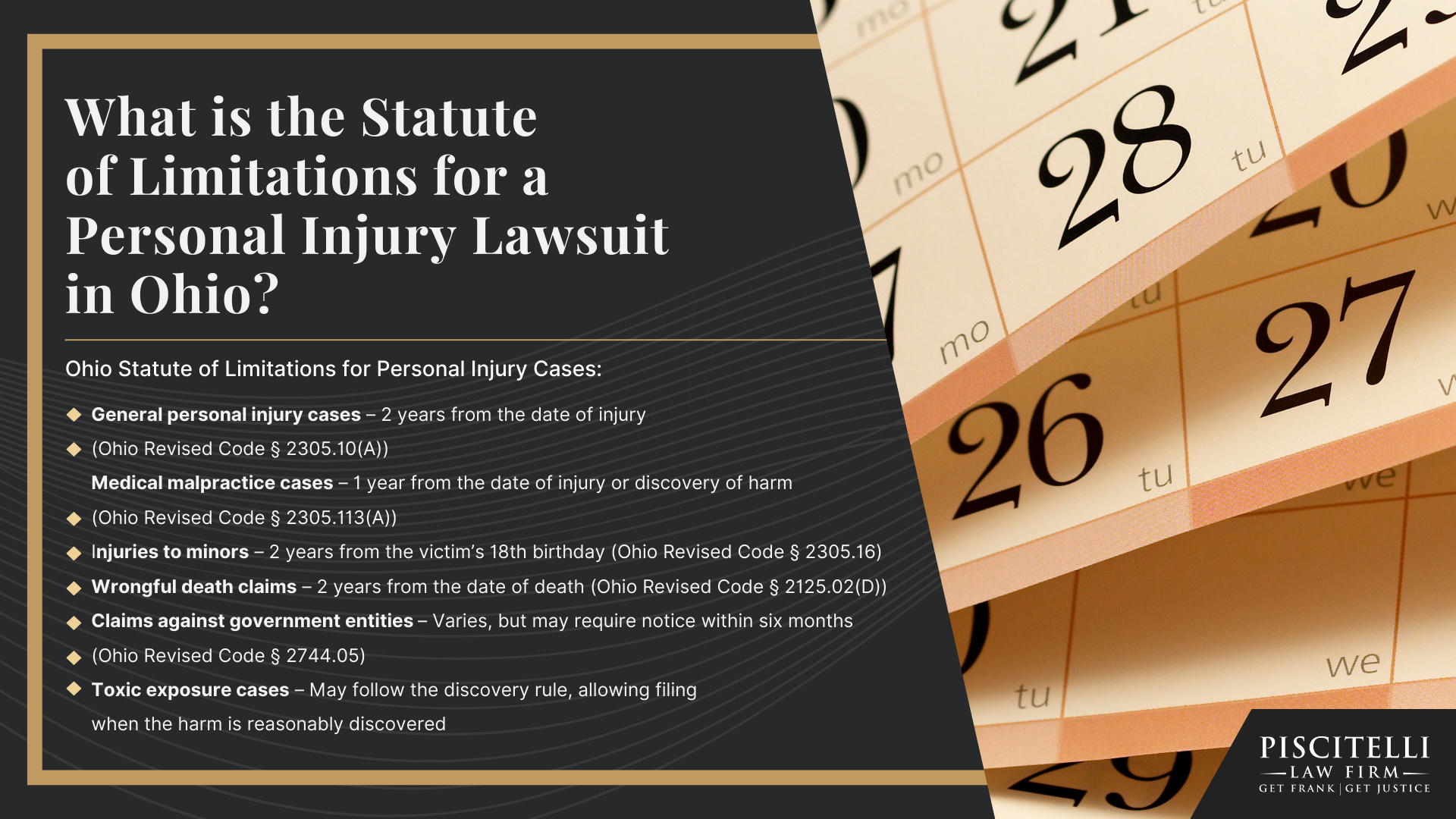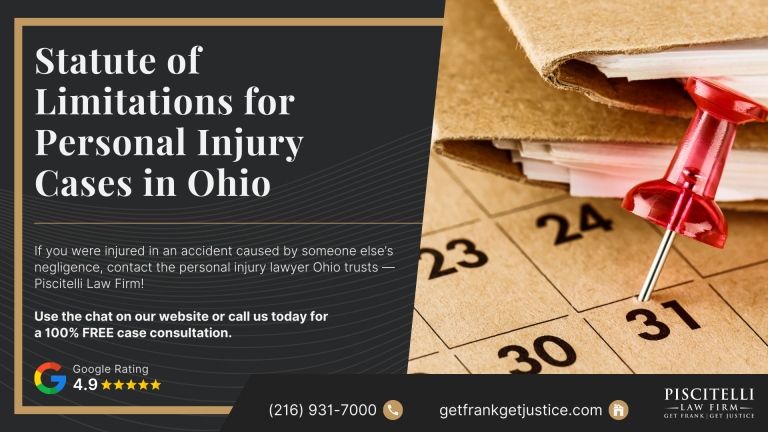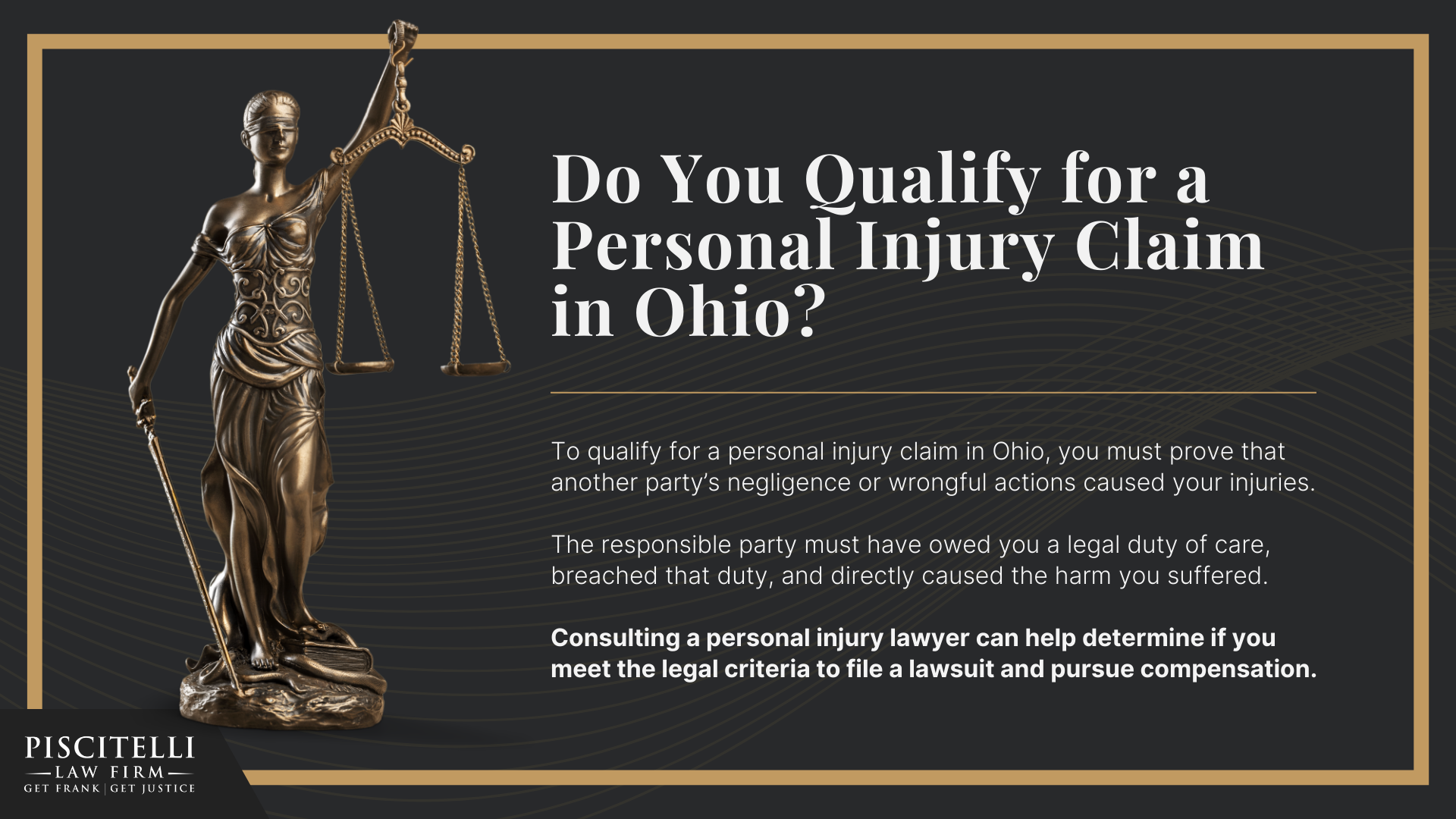In Ohio, most personal injury lawsuits and civil cases have a two year statute of limitations from the date of injury, as outlined in Ohio Revised Code § 2305.10(A).
This means that the injured party must file their lawsuit within two years or risk having their case dismissed, forfeiting their right to recover compensation.
This rule applies to cases involving car accidents, slip and falls, workplace injuries, and other negligence-based claims.
However, certain exceptions exist that can extend or shorten the filing deadline.
For example, if the injury is not immediately apparent—such as in toxic exposure cases or medical malpractice claims—the discovery rule may apply, allowing the statute of limitations to begin when the injury was reasonably discovered rather than when it occurred.
Claims involving minors follow a different timeline, as the two-year clock does not start until the child’s 18th birthday, meaning they may have until they turn 20 years old to file.
If the claim is against a government entity, such as a city or state agency, injury victims may have as little as six months to file a formal notice of claim, depending on the case.
Wrongful death claims in Ohio must be filed within two years from the date of death, not the date of injury.
Because these deadlines vary based on the circumstances of the case, consulting with a personal injury lawyer is crucial to ensuring a lawsuit is filed on time.

Ohio Statute of Limitations for Personal Injury Cases:
- General personal injury cases – 2 years from the date of injury (Ohio Revised Code § 2305.10(A))
- Medical malpractice cases – 1 year from the date of injury or discovery of harm (Ohio Revised Code § 2305.113(A))
- Injuries to minors – 2 years from the victim’s 18th birthday (Ohio Revised Code § 2305.16)
- Wrongful death claims – 2 years from the date of death (Ohio Revised Code § 2125.02(D))
- Claims against government entities – Varies, but may require notice within six months (Ohio Revised Code § 2744.05)
- Toxic exposure cases – May follow the discovery rule, allowing filing when the harm is reasonably discovered
Exceptions to the Personal Injury Statute of Limitations in Ohio
While Ohio law generally sets a two-year deadline for filing claims relating to car accident cases and other personal injury lawsuits, certain exceptions can extend or alter this timeframe.
These exceptions exist to account for situations where the injured party was unable to discover their injury right away or was legally unable to file a claim at the time of the incident.
Understanding these exceptions is critical, as failing to file within the correct period can result in losing the right to seek compensation.
The Discovery Rule
One major exception is the discovery rule, which applies in cases where an injury is not immediately apparent.
This rule allows the statute of limitations to begin when the victim reasonably discovers the harm, rather than when the accident actually occurred.
This is common in toxic exposure cases, where symptoms may develop years after exposure, and in some medical malpractice claims, where a doctor’s error might not be immediately known.
For Minors Who are Injured and Those Who Are Incapacitated
For injured minors, Ohio law delays the statute of limitations until the victim turns 18 years old. This means that a child injured in an accident may have until their 20th birthday to file a claim.
Similarly, if an injury victim is deemed legally incapacitated due to serious injuries or being deemed mentally incompetent, the statute of limitations may be paused until they regain the ability to file a lawsuit.
Fraudulent Concealment
Another exception applies when a defendant fraudulently conceals their role in causing the injury.
If the at-fault party actively misleads the victim or withholds key information, the statute of limitations may be paused until the fraud is uncovered.
Additionally, wrongful death claims follow a different timeline, starting from the date of death rather than the date of injury.
Personal Injury Cases Involving Government Entities
Cases involving government entities often have much shorter deadlines than standard personal injury claims.
For example, claims against the State of Ohio or a city government may require a formal notice of claim within six months or less, depending on the agency involved.
Missing this deadline can result in losing the ability to recover damages.








